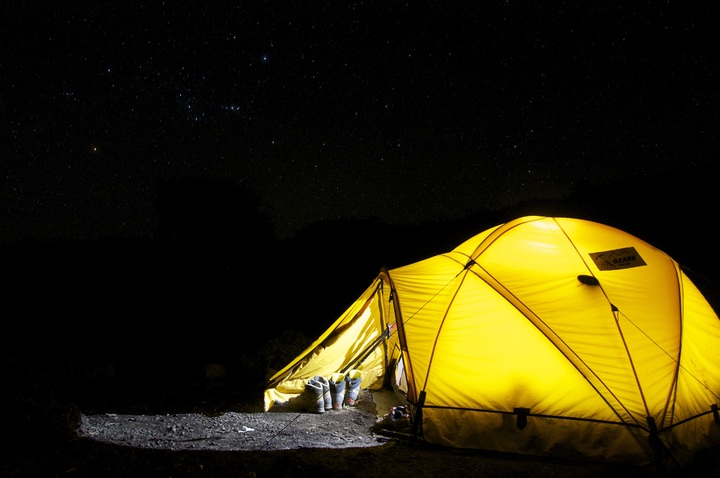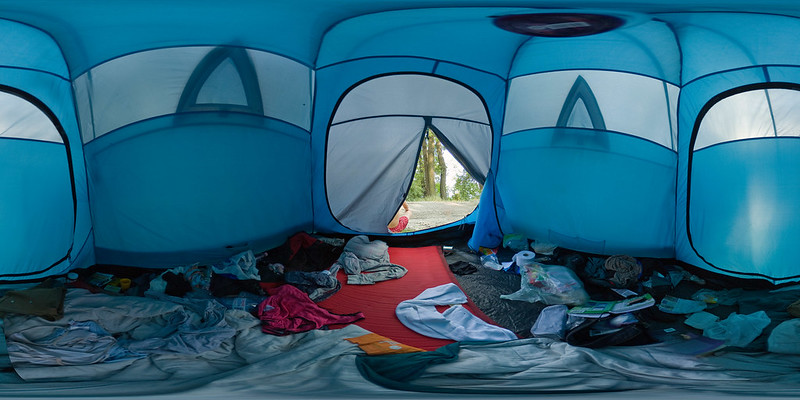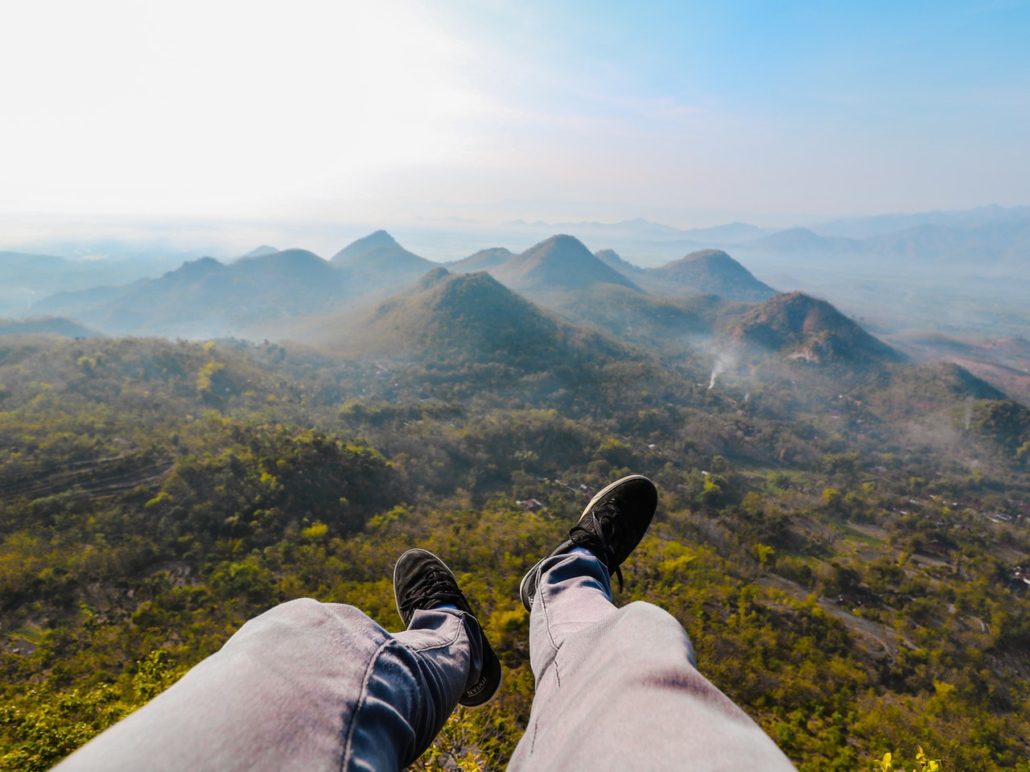Going camping is always exciting, and it gets doubled when it’s with family, right? If you’re embarking on a group trip, choosing the right family tent is an essential part of the trip.
The right-sized tent determines the comfort level throughout the camping trip for you and your family, but choosing the right size isn’t an easy task. To help with the process of how to choose a family tent, we’ve assembled this guide.
Tent Size – Why Is It So Important?
The tent’s size holds the utmost importance for your camping trip. Its size determines your trip’s comfort level, not just for you but for your family as well. No matter the family size it’s better to get a slightly bigger tent than you need. Otherwise, you and your family members will feel cramped inside throughout the trip.
If you don’t select the right-sized tent for the family camping trip, you’ll face discomfort while staying inside. Not only that, you won’t have enough room to move around and sleep comfortably.
That’s why it’s crucial to choose the right-sized family tent. However, as mentioned at the beginning it’s not as you might think. Without the right know-how, you might miss something that’ll ruin the whole trip.
Not to worry, our following segments will help determine the right-sized tent for your family trip.
Different Types Of Family Tents
As we mentioned earlier, there are quite a few types of tents but not all of them are well suited for your family and conditions.
In the following segment, we’ll have a brief discussion about a few types of family tents, which will help you have a better understanding of your needs.
Pop-Up Tents
A typical pop-up tent with external flexible poles
The Pop-up tent is the most portable tent on our list. It’s built with light aluminum looped framing which is confined with a tension strap.
When you release the tension strap from the framing you’ll have your tent ready to set up. Once the tent is popped you need to locate the braided loops at the bottom of the tent.
They are the stakeout points of the tent. Just stake out the braided loops and you’ll have your tent ready for camping. It’ll take about 2 to 4 minutes to complete the setup.
Yes, it’s true that pop-up tents are easy and quick to set up. However, it has a significant drawback, which is that it can’t withstand bad weather conditions. Because of its light aluminum framing, it can’t withstand bad weather such as heavy rain, wind, and snowfall. So if you know it’s going to be bad weather where you’re going then the pop-up tent is probably not the one for you.
Instant Cabin Tents
A large ‘instant cabin’ style family tent
Instant cabin tents are square or rectangular-shaped tents that provide a huge vertical space.
The instant cabin tents are structured with large aluminum pole framing, which makes them sturdy. That makes them withstand bad weather with ease.
It takes roughly 5 to 7 minutes to set up this type of tent for a single person. However, the larger cabin tents are harder to set up and require at least 2 people.
One of the major drawbacks of this type of tent is that it’s hard to carry because of the large size even after being folded in a box. So if you wish to use the instant cabin tent then you’ll need a much larger space inside your car.
Dome Tents

A typical dome tent for families
Dome Tents are the most popular tent, the reason being they’re widely available, unlike the other tents, also they’re very cost-effective.
That being said dome tents are designed with versatility in mind. That means these tents can easily withstand any kind of weather.
It’s because of its structure. Dome tents are made from a flexible interlocking frame that supports the main body of the frame and helps withstand bad weather conditions.
One thing that makes the dome tent different from the other two is that it’s a double-wall tent. This means it’s both properly ventilated and well protected at the same time.
The only drawback when you choose a dome family tent is the setup process, which is quite complex. One missed alignment will make your tent set up unsuccessful.
So if you are planning on using the dome tent for your family camping trip you should learn the setup process.
Factors to Consider When Choosing A Family Tent
As we mentioned earlier, determining the right size of your family tent depends on many structural factors as well as your personal situation.
The variety of tents available on the market can easily overwhelm you if you don’t know what you’re looking for. In this segment, we’ll review the factors you’ll need to consider while choosing a family tent for your next trip.
Tent’s Shape
The tent’s size and shape is the factor that will influence your comfort throughout the camping trip. Tents come in different shapes, and not every shape will provide the best support for you.
No matter the size of the tent, if the shape is not suited to you, it’ll cause hindrance to movement freedom and thus lead to discomfort.
So make sure you choose the right shape along with the size that’s suited to your needs and comfort for the tent. It’ll help ensure a successful trip for you and your family.
Living Space for a Family Tent

A family tent will offer plenty of space for the group
When you’re choosing a tent, you must consider the living space, and while considering the living space, you must include a few things. Such as:
- Family members (How many members of your family you’re bringing along)
- Trips duration (How many days are you going to stay for camping)
- Whether you’re spending a lot of time inside the tent or not
According to these considerations, you must choose an ideal living space for your family tent. The rule of thumb is to plan for at least 20 square feet in the tent for each person. But if you plan to spend more leisure time in the tent, you will want to allow for even more space.
Entry Points
Along with shapes and sizes, there are different types of entry points that you can leave open or close as per requirements. You might be thinking that fewer entry points on the tent would be good for better protection of your tent. Well, just like living space, it depends on your needs.
Most tent doors are designed with nets that will keep the insects out and will let you enjoy the view without opening the whole door.
While choosing the entry points, you should also consider the number of members using the tent. For example, if you’re buying a large tent for 16 people, you should look for a tent with multiple entry points on each side.
Ventilation System
A proper ventilation system is necessary to allow for proper airflow inside the tent. Just having a few entry points can’t provide the required ventilation for you and your family.
So it’s a good idea to choose a tent with several windows. It will ensure the necessary influx of air, which will provide the proper ventilation system inside the tent.
Ease of Set Up
Setting up a tent can be easy or hard according to the methods. Some tents have an easy setup system that can be done by one person and some are so hard that it needs more than two people to set up properly.
So unless you want to go through a complex tent setup process you should choose an easy-to-set tent. It will not only save you a lot of hassle but also your valuable time. It’s also a good idea to run thru the setup process before your trip.
Organizational Features
Keeping your necessary items organized inside the tent is a hassle, especially if you have children.
You should know that there are tents that come with features that help you better organize your essential items and tools. If this is something you’re interested in, look out for tents that have organizational features like vestibules, gear lofts, and tent dividers. This will help keep the interior of your large family tent organized and make your camping experience more enjoyable.
Portability
It’s ideal for a tent to be portable, and as we all know, portability makes traveling much easier.
Before you buy a big family tent, you must consider its portability as well. Otherwise, you’ll face trouble and complexity while traveling.
Logically, a bigger tent takes a lot of space even after being folded in a box. So make sure you plan out enough space inside your vehicle for the large tent.
Rainfly
The rainfly is a water-resistant material that stops the rain or condensed water from coming inside the tent. If you’re looking to buy the cheapest possible family tent, the quality of materials may not be the best. If the rainfly material is of poor quality, it can lead to water condensing inside the coating, causing water to leak inside the tent.
On the flip side, buying a tent with a proper rainfly will help prevent the heavy rainwater from getting inside the tent, which is especially important if you’re faced with bad weather conditions. While buying your family tent make sure to check reviews that mention the rainfly.
Durability
Family tents need to be much more durable than your regular tents. The more people who will be using the tent, the more wear and tear will occur. The sturdiest tents are those built with aluminum framing. These are more resistant to damage.
Just so you know, aluminum frames bend if stressed, however, they can be easily repaired and you don’t need any special expertise for it either. So while buying a tent make sure you get the one with aluminum framing.
Final Considerations for Choosing a Family Tent
Not only is it important to choose the right-sized family tent, but there are also plenty of factors to consider before making your purchase. Luckily, now you can follow the above-mentioned factors and easily find the right tent for your family camping trip.




















